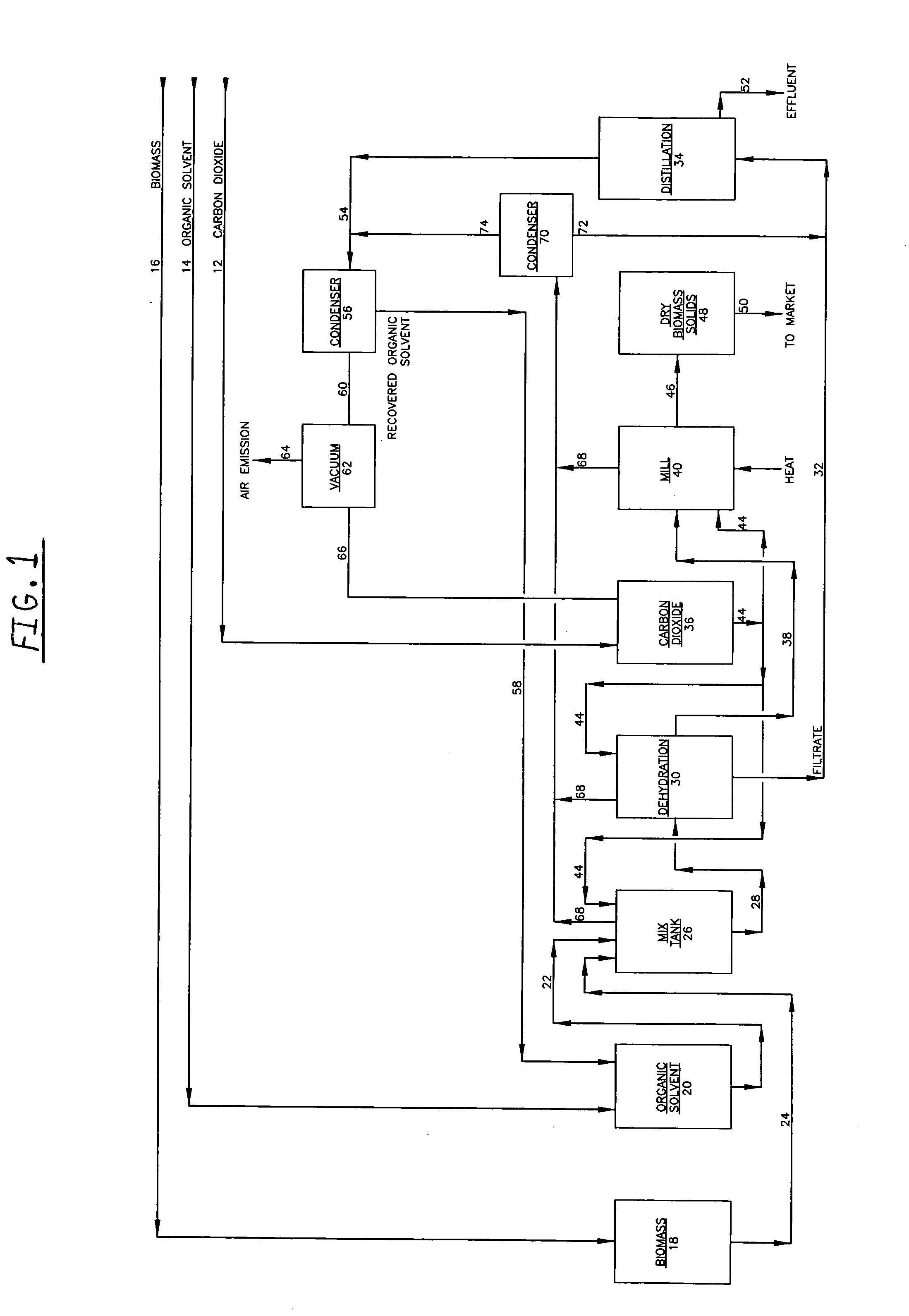Method for dehydrating biomass
a biomass and dehydrating technology, applied in the direction of chemical recycling, etc., can solve the problems of unfavorable consumption of biomass, uneconomical feasibility of transporting biomass containing a significant amount of water to market, and the use of co-current dryers in most general drying applications, etc., to achieve less energy consumption, improve drying efficiency, and reduce drying temperature
- Summary
- Abstract
- Description
- Claims
- Application Information
AI Technical Summary
Benefits of technology
Problems solved by technology
Method used
Image
Examples
Embodiment Construction
[0034] Although this invention is susceptible to embodiments of many different forms, a preferred embodiment will be described and illustrated herein. The present disclosure exemplified the principles of the invention and is not to be considered a limit to the broader aspects of the invention to the particular embodiment as described.
[0035]FIG. 1 shows a block flow diagram of the steps in the dehydration system and process for an organic substrate biomass produced as a by-product of an ethanol production system. This invention dehydrates an organic substrate such as wet cake derived from a corn base in a predetermined negative pressure, in a heated and limited air flow environment that keeps the organic substrate below approximately 200° F. in a four stage process comprising the steps of leaching with an organic solvent, mechanical and then pneumatic dewatering of the organic substrate and finally, the complete recovery of the organic solvent for reuse in the process.
[0036] One of...
PUM
 Login to View More
Login to View More Abstract
Description
Claims
Application Information
 Login to View More
Login to View More - R&D
- Intellectual Property
- Life Sciences
- Materials
- Tech Scout
- Unparalleled Data Quality
- Higher Quality Content
- 60% Fewer Hallucinations
Browse by: Latest US Patents, China's latest patents, Technical Efficacy Thesaurus, Application Domain, Technology Topic, Popular Technical Reports.
© 2025 PatSnap. All rights reserved.Legal|Privacy policy|Modern Slavery Act Transparency Statement|Sitemap|About US| Contact US: help@patsnap.com

